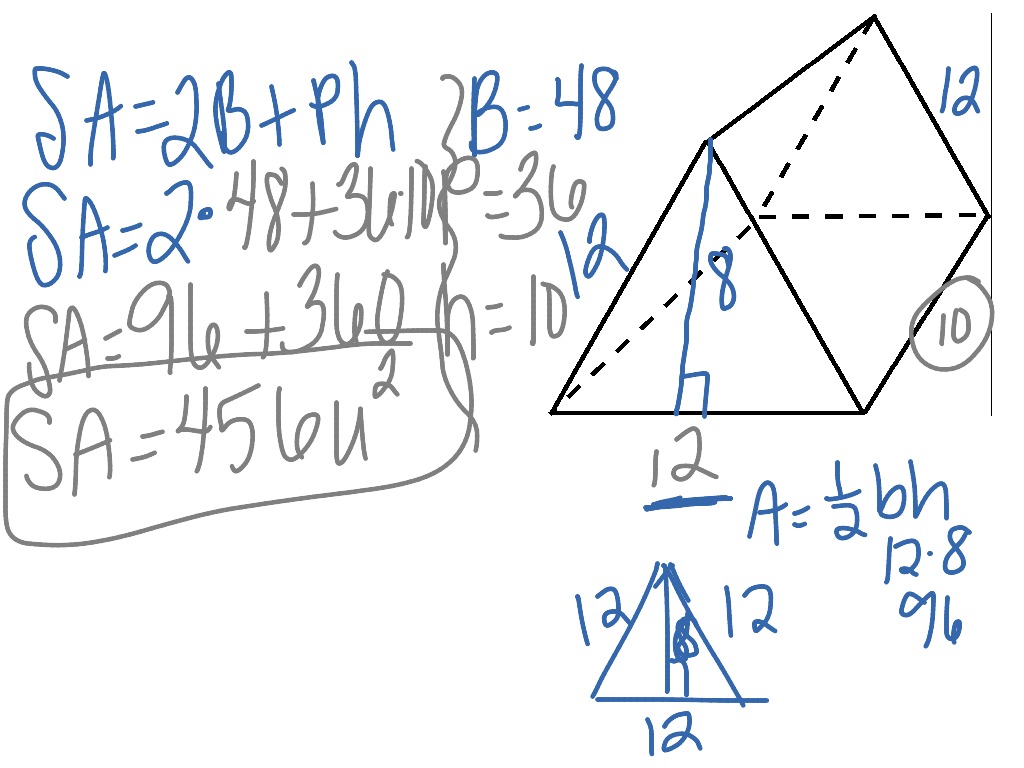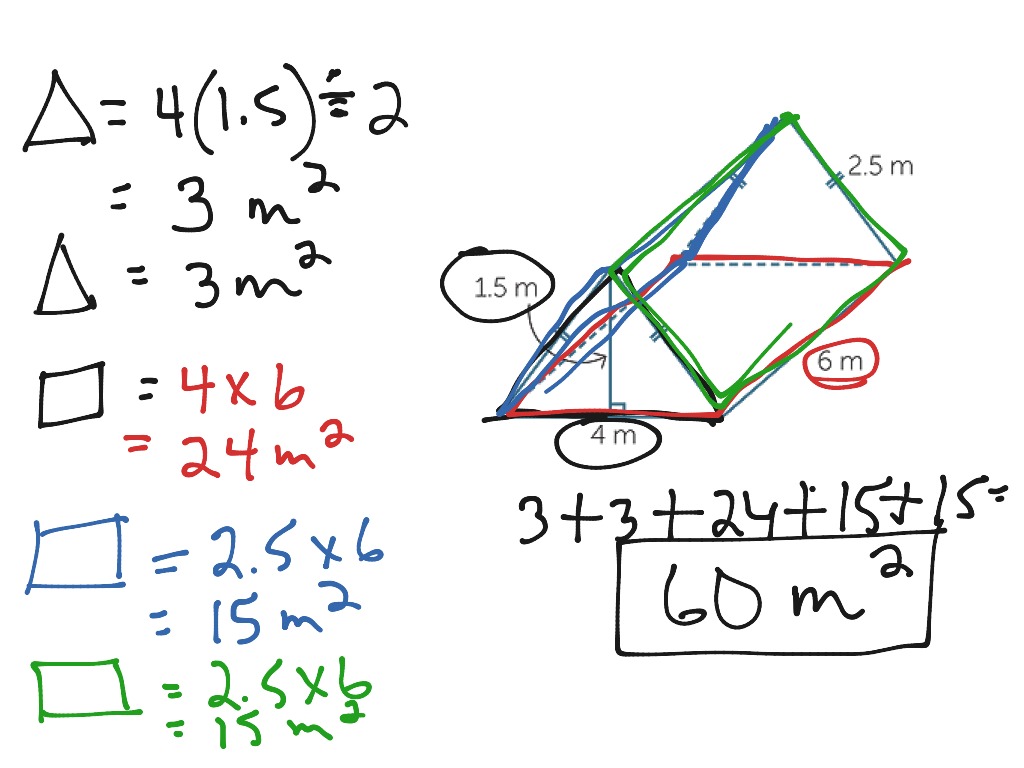

The shape of the base depends on what kind of prism it is. Area of the sides = Perimeter of the base × Prism height.Therefore, the area of a side can be calculated by the following formula. Since both triangular and quadrangular prisms have rectangular sides, the side length of the rectangle can be calculated by adding the perimeter of the base.Īlso, the height of the triangular prism is the same as the vertical length of the rectangle. The side length of the rectangle is equal to the perimeter of the base (orange line). In the nets of the prism, the sides will always be a rectangle (or a square). The following is the net of a triangular prism when it is converted to a plane. What are the characteristics of a prism net? As an example, let’s consider the net of a triangular prism.
#Surface area of a triangular prism formula how to
How to Calculate the Surface Area of a Prism We will explain each of the two patterns in the following sections.

However, the calculation of surface area is different for prisms and cylinders. So use the net to imagine what it would look like if it were converted to a plane and calculate the surface area. In the calculation of space figures, we will be presented with 3D figures.

We can convert a three-dimensional figure into a two-dimensional figure.įor example, the following is a net of a quadrangular prism. After disassembling a three-dimension by using scissors, the figure is expanded to become a flat surface, which is called a net. How do we figure out the area of bases and sides? To do this, we can use nets. The Total Area of the Net Is the Surface Area We can then calculate the surface area of the column by adding the two base areas and the side areas. By adding up the sides, we can get the side area. On the other hand, the side surface is the side. This area is the base area, respectively. Each part needs to be calculated separately.įor a prism and a cylinder, the base and sides are as follows.Įach of the top and bottom surfaces is a base. Surface are = Base area × 2 + Side areaĮven though it is a formula, it does not mean that you can find the surface area with only one formula.Therefore, the formula for the surface area of a prism and a cylinder is as follows. To find the surface area of a prism or a cylinder, calculate the top and bottom base areas and side area, respectively, and add the numbers. How do we get the surface area of prisms and cylinders? The way to do this is to calculate the base areas and side areas. Adding Base Areas and Side Area Yields the Surface Area In any case, when we find the surface area, it is important to understand that there are two types of pillar shapes: prisms and cylinders. However, in mathematics, triangular prisms and quadrangular prisms are mainly used as calculation problems. Of course, there are also pentagonal and hexagonal prisms. On the other hand, if it is a round pillar, it is called a cylinder. If it is a rectangular shape, it is called a quadrangular prism. If it has a triangular shape, it is a triangular prism. In the prism, there are various three-dimensional shapes. To understand how to find the surface area, we must understand the types of prisms and cylinders. There are two main types of pillar shapes: prisms and cylinders. Two Types of Pillar Shapes: Prismatic and Cylindrical 4 Calculating the Surface Area of Prisms and Cylinders.3 Exercises: Surface Area of Prisms and Donuts Shapes (Hollow Cylinders).2.2 Calculating Surface Area from a Cylinder Net.2.1 How to Calculate the Surface Area of a Prism.2 The Total Area of the Net Is the Surface Area.1.1 Adding Base Areas and Side Area Yields the Surface Area.1 Two Types of Pillar Shapes: Prismatic and Cylindrical.


 0 kommentar(er)
0 kommentar(er)
